Many useful culinary herbs grow well in containers. Basil, chives, cilantro, dill, common and Florence fennel, garlic, lemon balm, mint, oregano and marjoram, parsley, rosemary, sage, French tarragon, and thyme are excellent choices for container growing.
Grow these culinary herbs in pots near the kitchen door or on a windowsill so they are readily at hand when preparing meals.
Culinary herbs like nearly all herbs require well-drained soil to thrive. Plant herbs in new or well-cleaned containers, use new good-quality potting mix and do not overcrowd pots with too many plants.
Start herbs from seed in the spring or indoors to ensure quick germination. In late summer and fall, start herbs from seed or seedlings.

Good Products for Raised Bed Growing at Amazon:
- Galvanized Raised Bed 8×3
- Cedar Raised Bed 4×8
- Elevated Cedar Planter 4×2
- Walk-In Greenhouse Tunnel 15x7x7
- Row Cover for Freeze Protection 10×30
If you are planting out seedlings or starts from a nursery, be sure to tease out the roots to help them establish more readily then pack the potting mix down gently as you go, but avoid compacting the soil.
Allow room between the soil level and the container rim for watering. Keep the soil moist but not wet for optimal growth.
More herb growing tips at How to Start an Herb Garden.
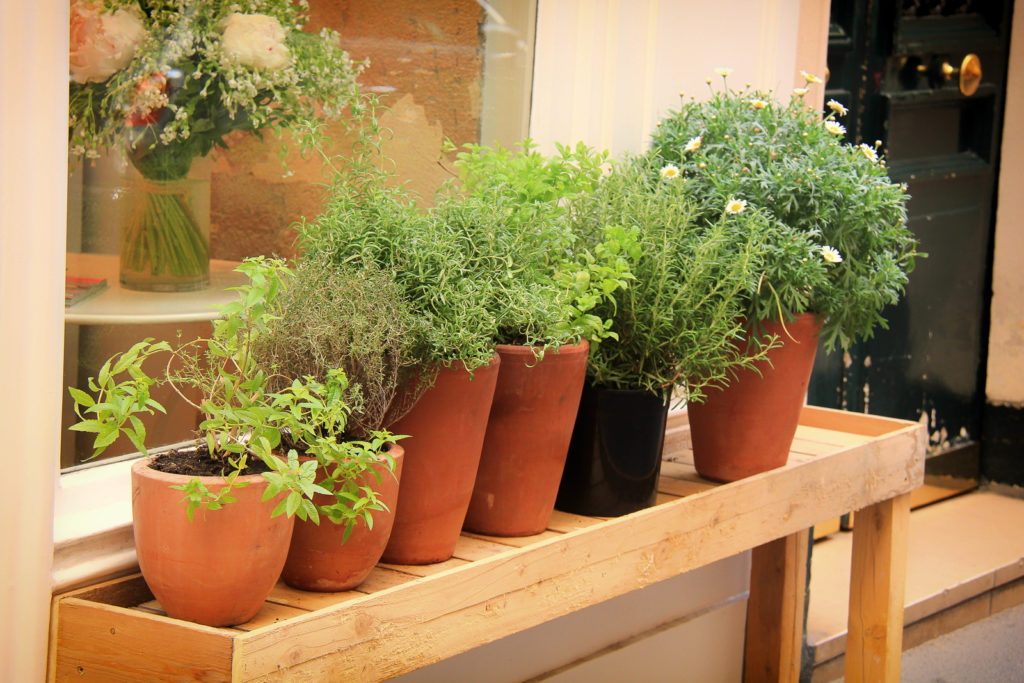
Most culinary herbs are perennials so if you protect them from winter chill you will have them next year and the year after.
Because culinary herbs are going to be used in cooking or beverages, you’ll want to avoid treating them with any substance that will leave a residue on leaves and alter the flavor. Most herbs resist insect attacks, but a simple shower under the kitchen faucet or garden hose will keep leaves clean. Add nothing more than a handful of compost to enrich the soil and flavor of culinary herbs growing in pots.
Most culinary herbs are perennial plants and semi-hardy which means they will not survive a very cold winter. Bring herbs growing in containers indoors for winter; just set them in a window with plenty of natural light.
Easy-to-grow herbs for containers
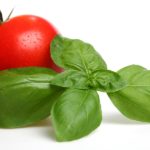
• Basil: A good choice for indoor or outdoor growing. This tender annual or short-lived perennial needs direct sunlight, so put it in a kitchen window if you grow it indoors. Outdoors basil can take the direct sun. Use the aromatic leaves before the plant comes into flower for optimal flavor. Basil, of course, has a special affinity with tomatoes. Use freshly torn leaves on a salad of sliced tomatoes, lightly seasoned with salt and freshly ground pepper and drizzled with extra-virgin olive oil. You can make several cuttings of the top three to four inches in a season. Click here for How to Grow Basil. Click here for more Basil Kitchen Basics.
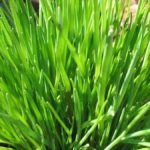
• Chives and garlic chives: Both are perennial plants, and both can tolerate shade but will do best in full sun. Be sure to water chives regularly during dry weather. It’s ok to sow chive seeds thickly; that way the plants will support each other. Add delicately onion-flavored chives to salads and egg dishes; garlic chives are just a tad stronger flavored. Add a half-handful of chives to finish a salad, soup, or sauce. Long cooking will diminish the flavor of chives, so add them to cooked dishes at the last minute. Chive flowers—light purple and even more delicately flavored—can be sprinkled on salads for both a dash of color and flavor. Click here for How to Grow Chives. Click here for more Chives Kitchen Basics.
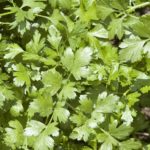
• Cilantro: This hardy annual grows best in partial shade. Keep cilantro close to the kitchen; fresh cilantro leaves do not keep well; cut them as you need them for cooking or garnishes. The cilantro leaf has a faint overtone of anise. Use the leaves in soups, stews, curries, stir-fries, vegetables, salads, fish, poultry, yogurt, fresh chutneys, relishes, and tomato sauces. The dried seeds of cilantro are called coriander and are included in curries and pickles. If you are growing cilantro for its seeds, set the plant in full sun. You can also use the roots of cilantro: chop the roots finely and add them to curries and stews for intense flavor. Click here for How to Grow Cilantro. Click here for more Cilantro Kitchen Basics.
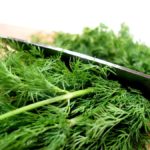
• Dill: This hardy annual performs best in full sun. Grow dill for its feathery, aniseed-flavored leaves and the seeds that follow flowering. Use leaves with mild cheeses—such as cream cheese or cottage cheese—and in omelets, seafood, cold soups, potato salad, and with salmon and veal. Use seeds in breads, meat stews, rice, and cooked vegetables. Dill seeds are also used to soothe an upset stomach. Dried dill leaves are called dillweed, but the dried leaves do not retain much flavor so you’ll have to use them generously in cooking. Sow seeds in clumps so plants can lean against one another for support. Click here for How to Grow Dill. Click here for more Dill Kitchen Basics.
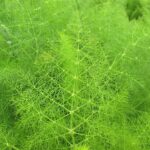
• Fennel and Florence fennel: Common fennel is a hardy perennial that grows tall to 6 feet–so you’ll need to give it some room. Fennel requires full sun for best growth. The feathery dark green leaves have an aniseed flavor. Use fresh leaves in a bouquet garni to flavor fish dishes or chop the fresh leaves and sprinkle them over soups or salads as a garnish. Fennel’s small, aromatic, flat oval seeds are roasted for use in Indian dishes. Florence fennel is smaller than the common fennel. Florence fennel is an annual plant grown for its bulbous stalk base and also for its young stems which are cooked and eaten as a vegetable. Fennel has a tall flower head that will need support and protection from wind. Click here for How to Grow Fennel. Click here for more Fennel Kitchen Basics.
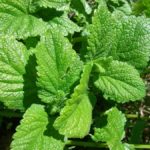
• Lemon balm: This herb is easy to grow and propagates quickly from cuttings. Give lemon balm full sun for best growth. Lemon balm’s light green, heart-shaped, serrated leaves have an aroma of lemon with a hint of mint. Keep lemon balm cut back—don’t let it go to seed—and use chopped fresh leaves to add zest to sweet or savory dishes. Any dish that uses lemon juice will be improved with the addition of a few lemon balm leaves. You may want to set this plant away from the kitchen door; the sweet scent of lemon balm can attract bees. Unlike most herbs, lemon balm can tolerate moist soil. Click here for How to Grow Lemon Balm.
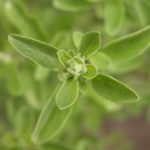
• Marjoram and oregano: Marjoram and oregano are very closely related. They are similar in appearance with small, soft green leaves and small white or pink flowers. But marjoram has a more delicate flavor; oregano has a more potent, robust flavor. (Oregano is actually a wild variety of marjoram.) Generally, use dried oregano for its powerful flavor—pizza is a perfect match for oregano; use marjoram added fresh at the end of cooking or added to salads and butter sauces for fish. Both are perennials though marjoram is often treated as an annual. Both thrive in full sun. Treat marjoram and oregano as annuals. Click here for How to Grow Marjoram. Click here for more Marjoram Kitchen Basics.

More easy-to-grow herbs for containers
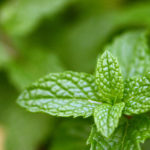
• Mint: Mint is one herb that is almost always best grown in a container. The roots of this hardy perennial quickly spread and can become invasive if not controlled. Mint grows best in the morning sun. There are dozens and dozens of mint varieties—many with distinct flavors and scents. The two mints most commonly used in cooking are spearmint and peppermint. Spearmint is preferred for mint sauce or mint jelly—good with lamb, new potatoes, peas, and carrots. Also, use spearmint with teas. Use peppermint to flavor candy and desserts. All mints are best used fresh. When mint grows wild, just cut it back to soil level and watch it grow back again. Click here for How to Grow Mint. Click here for more Mint Kitchen Basics.
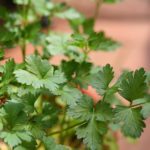
• Parsley: Parsley is perhaps the most widely used culinary herb. There are two main types of parsley—curly and flat-leaf. Flat-leaf parsley (also called Italian parsley) has dark green foliage and is best for cooking; its intense flavor stands up to heat. Curly parsley is used as a garnish. Use chopped flat-leaf parsley to flavor sauces, soups, salads, stews, eggs, fish, meat, poultry, and buttered new potatoes. Parsley is a hardy biennial and it grows well in full sun or partial shade. Parsley has the best flavor when snipped from the plant and used fresh—not cut and stored. Parsley seeds are slow to germinate so soak them overnight before sowing. Click here for more Parsley Kitchen Basics.
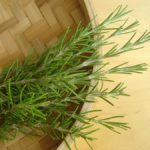
• Rosemary: Crush or finely chop the aromatic leaves of rosemary to release this herb’s strong flavor to accompany meat dishes– especially lamb and pork, chicken, tomato-based sauces, bread, stuffed vegetables, and pizza. (The needlelike form and rough texture of rosemary can be unpleasant eaten whole.) If you use whole sprigs to infuse long-cooking dishes with flavor, remove the sprigs before serving. Grow rosemary in full sun. ‘Prostratus’ is a cultivar that grows to just 6 inches tall and is well suited for container growing. Rosemary can become woody in a year or two, so you may want to put a new plant in your container every couple of years. Click here for more Rosemary Kitchen Basics.
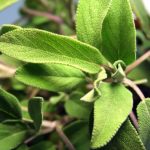
• Sage: Sage grows best in full sun and readily tolerates hot, dry conditions. Sage is strongly flavored—with overtones of camphor—and should be used discreetly. Chopped fresh sage leaves can be added to pasta sauces and stuffings; fresh sage is milder in flavor than dried sage. Use dried sage with rich and fatty meats like pork, goose, and sausages. Add dried sage to tomato-based sauces, pickles, and cheese dishes. There are many sage cultivars: narrow- and broad-leaf garden sage, golden sage, purple sage, and tricolor sage. All can be used like common gray-green sage in the kitchen. Soak seeds overnight to aid germination before sowing. Click here for How to Grow Sage. Click here for more Sage Kitchen Basics.
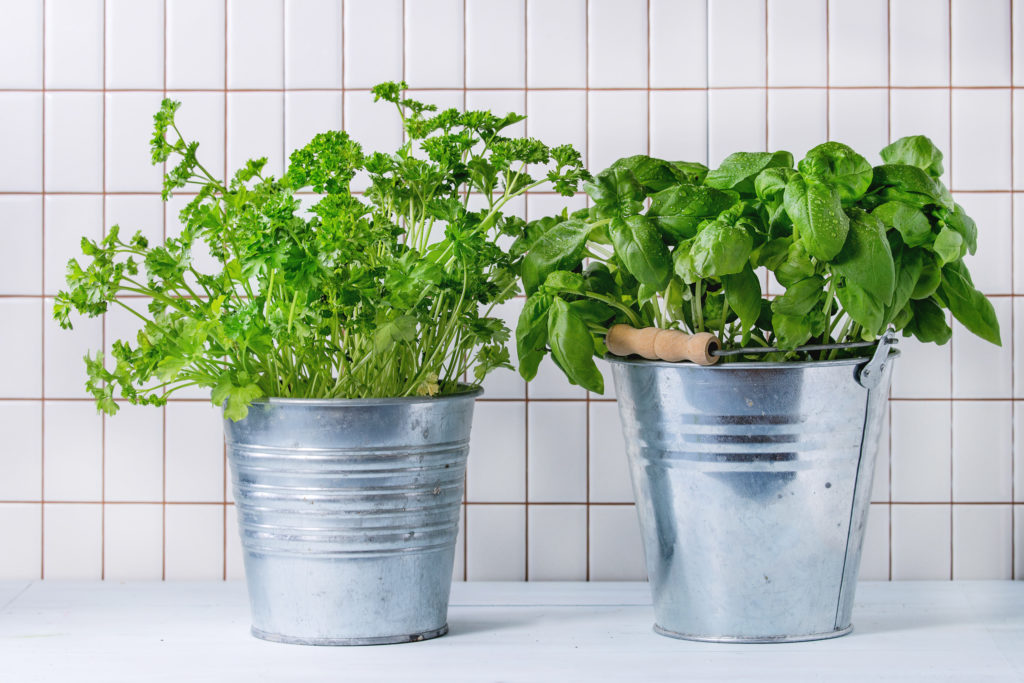

• Tarragon (French tarragon): Tarragon is a good choice for growing in the shade or morning sun. Tarragon has a subtle, delicate flavor and is a cornerstone of the traditional French Fines Herbes blend of parsley, chervil, chives, and tarragon. Use tarragon and the fines herbes fresh and finely chopped to flavor green salads, poached chicken, and fish. Add French tarragon and the other fines herbes at the end of cooking or sprinkle them on as a flavorful garnish. Use fresh chopped tarragon to flavor omelets and other egg dishes, soups, mushrooms, salad dressings, flavored butter, and béarnaise or tartare sauce. Protect tarragon from the wind. Click here for How to Grow Tarragon. Click here for more Tarragon Kitchen Basics.
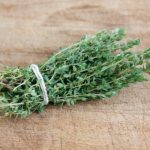
• Thyme: Thyme is an herb well suited for planters and pots and window boxes—as well as the garden. Thyme is an evergreen perennial that loves the sun. Use thyme in slow-cooked dishes, especially stews and soups, sautéed or baked vegetables, tomato-based sauces, stuffings, and roasted poultry and meats. Garden thyme, French thyme, and lemon thyme are the three most commonly used thymes in the kitchen. Lemon thyme is a good match for fish and chicken and some fresh fruit desserts—but use it sparingly. Chopped fresh thyme leaves are much more pungent than dried thyme. To start new plants, layer some stems with soil to aid rooting. Click here for How to Grow Thyme. Click here for more Thyme Kitchen Basics.
Click on these herbs for growing tips: basil, chives, cilantro, dill, fennel, lemon balm, marjoram, and oregano.
Container-grown herbs frequently asked questions
Q: Which herbs can I grow in containers on the patio?
A: Low-growing herbs are ideal for containers. Choose an herb that is in proportion to the container. Herbs that are a good choice for container growing include basil, calendula, chamomile, chives, lavender, lavender cotton, parsley, sage, scented geraniums, and thyme.
Q: What is the best soil for growing herbs in containers?
A: Use a potting mix for growing herbs in containers. Avoid garden soil which can be too heavy for container growing. You want soil that is not too heavy; soil that is easy for root growth.
Q: Can I grow herbs in a ceramic bowl or pot?
A: Yes, if the container has holes in the bottom for drainage. Drainage holes will ensure that roots don’t become waterlogged.
Q: How often should I water herbs growing in containers?
A: How often you water depends on the size of the container and the moisture requirements of the herbs you are growing. Small containers will need to be watered more often than large ones. Check soil moisture every day or two–especially in hot or windy weather. Some herbs prefer dry soil, while others like average to moist growing conditions.
Q: How often should I fertilize herbs growing in containers?
A: Because herbs in containers are watered more frequently, fertilizer washes out through the soil quickly. Feed herbs in containers lightly every month or two. Use a dilute solution of water-soluble organic fertilizer.
Q: My herbs in pots are growing unevenly; they are leaning to one side. What causes this?
A: The herbs are probably growing towards the light. Rotate containers regularly to that the plants grow evenly. If a container is too heavy to rotate, place it on a dolly that can be turned easily.
Q: What do I do with my container herbs outdoors in winter?
A: If you live in a cold-winter region, bring the herbs indoors in winter if they are small enough. If they are large and can tolerate freezing weather, dig a hole and place the entire pot in the ground until spring. You can also take cuttings and start new plants and then replant the containers next spring.
Q: Which herbs can I bring indoors in winter?
A: If herbs are growing in pots you can bring them indoors in winter. Herbs that grow well indoors include basil, chives, scented geraniums, lemon verbena, marjoram, parsley, thyme, summer savory, and rosemary. You can bring these indoors or start new plants from seed, division, or cutting.
Q: What do herbs growing in pots indoors want?
A: Grow herbs indoors on a sunny windowsill or under fluorescent light. Water them when the top of the soil surface has dried out. Most herbs indoors can grow at room temperature, rosemary likes it a bit cooler. Do not fertilize indoor herbs from mid-fall through mid-spring.
Q: How much light do herbs growing indoors under lights want?
A: Keep the lights on for 14 to 16 hours each day. Place plants about 12 inches below the lights.
Q: What causes herbs growing indoors to yellow and dry out?
A: The likely cause is the humidity too low. Set potted herbs on a tray of pebbles and keep the water filled to the top of the pebbles. This will create humid conditions around the plants.
Related articles:
Best Herbs for Container Growing
Planning the Home Fruit Garden
Garden Planning Books at Amazon:
- Vegetable Garden Almanac & Planner
- Kitchen Garden Grower’s Guide Vegetable Encyclopedia
- Vegetable Garden Grower’s Guide
- Tomato Grower’s Answer Book



